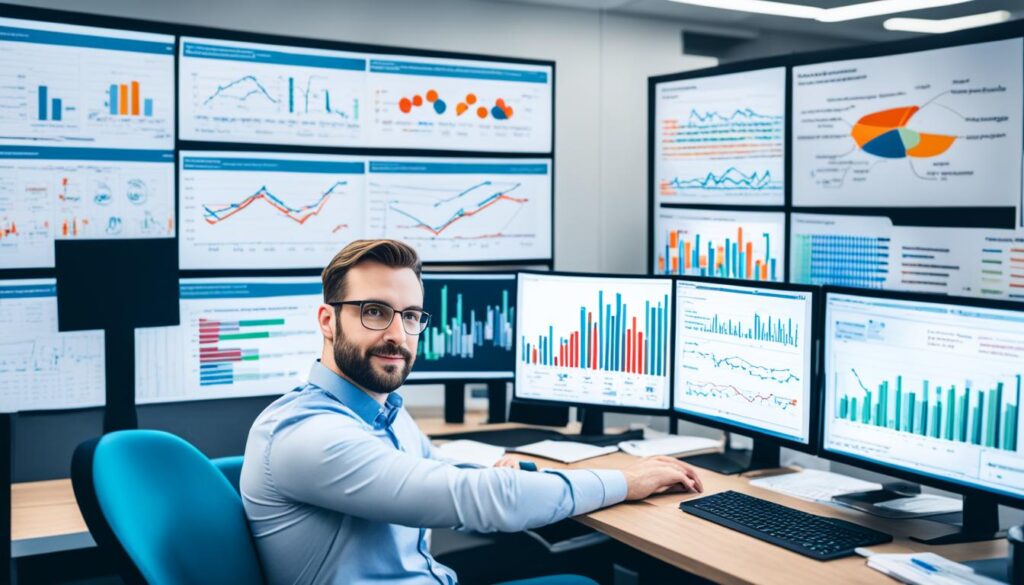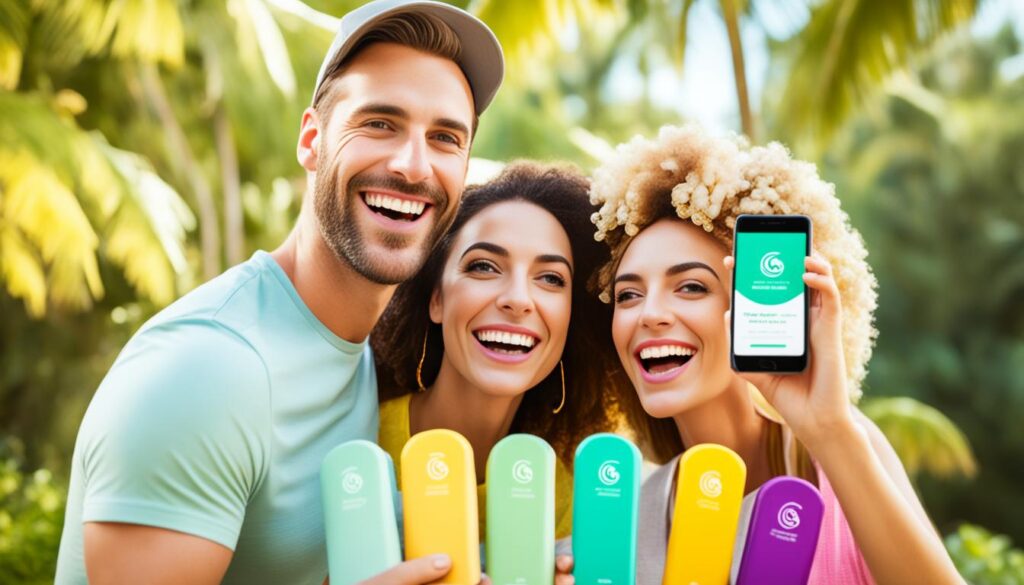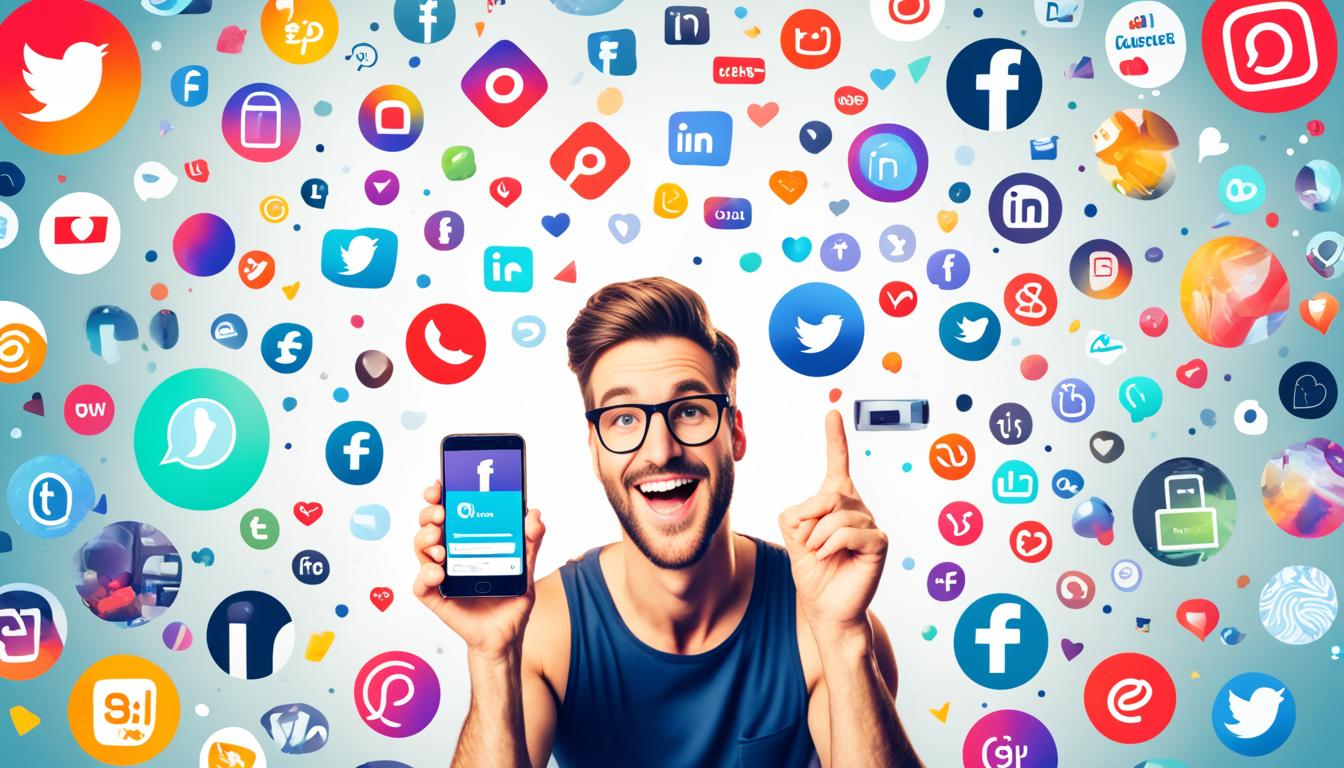Can a single tweet from a social media star make or break a brand’s reputation? Today, influencer marketing is a key way to shape what people think of a brand. We’re exploring how social media influencers affect brand reputation.
The influencer marketing industry is growing fast, with spending expected to hit $15 billion by 20221. This growth is no surprise, since over 4.20 billion people use social media worldwide2. Brands are reaching out to influencers like Zoella, PewDiePie, and Rosanna Pansino to connect with their huge followings1.
Social media influencers (SMIs) are changing how brands talk to people, even in tough times. They can greatly shape what people think and what they buy. But, people are getting smarter and may doubt sponsored content1.
We’ll look at how influencer endorsements can help or hurt a brand’s image. We’ll see success stories like McDonald’s in India and times when it didn’t work out. These examples will show the fine line between good influencer marketing and keeping a brand’s integrity.
Key Takeaways
- Influencer marketing spending is projected to reach $15 billion by 2022
- Over 4.20 billion people worldwide use social media platforms
- Social media influencers can significantly impact brand reputation
- Consumer awareness of influencer-brand relationships is increasing
- Successful influencer partnerships can boost brand perception and sales
- Poorly executed influencer campaigns may harm brand reputation
Introduction to Influencer Marketing and Brand Reputation
Influencer marketing is now key for brands on social media. Over 80% of marketers say influencers are vital to their social media plans3. This method uses influencers’ trust and wide reach to promote products and services.
The industry is growing fast, expected to hit $24 billion by 20243. This growth is because people trust what influencers say. In fact, 92% trust influencer marketing more than traditional ads, and 61% like influencer tips over brand content4.
There are different types of influencers, from those with small, loyal fans to those with big audiences. By 2024, 44% of brands will work with nano-influencers, up from 39% in 20233. This shows how real connections help build trust in a brand.
Influencer marketing really helps with buying decisions. Almost half of consumers buy something monthly because of influencers, and 86% make a purchase yearly because of them3. This leads to great returns, with businesses earning $6.50 for every dollar spent on influencer marketing4.
We’ll look more into how influencer marketing shapes brand reputation and affects consumer behavior in the digital world.
Theoretical Framework: Source Credibility and Persuasion Knowledge
The source credibility model is key to understanding influencer marketing success. It shows how influencers’ traits affect their persuasive power. Trust, expertise, and looks are important in how people see influencers5.
Influencers’ knowledge and trustworthiness shape how their followers act. Being seen as trustworthy is key for keeping followers and changing opinions5. The elaboration likelihood model explains how influencers persuade people. It depends on how much people think about the message.

Parasocial relationships form between influencers and their fans, creating a close bond. These one-way connections build trust and make people more likely to be persuaded. In fact, 92% of people trust influencers more than traditional ads6.
The persuasion knowledge framework shows how people process what influencers say. As people get older, they learn more about persuasion. This knowledge kicks in when they notice marketers’ true motives, which can make them doubt7.
| Factor | Impact on Influencer Effectiveness |
|---|---|
| Trustworthiness | Builds credibility and fosters audience trust |
| Expertise | Enhances persuasion through perceived knowledge |
| Attractiveness | Influences initial perceptions and engagement |
| Parasocial Relationships | Creates emotional connections and loyalty |
Knowing these theories helps marketers use influencers well. By 2025, 65% of marketers plan to use TikTok for influencer marketing, up from 42% in 20217. This shows how crucial understanding influencer persuasion is in today’s digital world.
Methodology of Influencer Reputation Impact Studies
We used quantitative research to study how influencers affect their reputation. We got data from social media users who follow influencers. This method lets us hear directly from the people who matter most.
We surveyed 388 social media users in the United States. This big sample size is great for detailed analysis8. We looked at how different things about influencers affect what users think and do.

We looked at influencer marketing from different angles. We saw how trust and expertise in influencers change how people act. The influencer marketing market was worth $2 billion in 2017 and could be $50-110 billion by 2020. This shows how fast it’s growing9.
We asked questions about how influencers and their followers connect. We found that speaking the same language, sharing similar interests, and being open with each other matter a lot. These things help shape how followers feel about brands8.
| Factor | Impact on Perceived Friendship |
|---|---|
| Language Similarity | Significant |
| Interest Similarity | Significant |
| Self-disclosure | Significant |
| Psychological Well-being | Not Significant |
We found that when influencers are seen as credible, people are more likely to buy things and have positive views on brands. This matches what other studies have shown, like how 49% of people trust influencer advice9. We also saw that being loyal to a follower can help connect credibility to how people act.
Positive Impact Case Studies

Influencer marketing has changed the game for brands and consumer trust. A huge 89% of marketers say it brings in as much or more return on investment than other methods10. It’s also 11 times more effective than paid ads in bringing in returns10.
Let’s look at some amazing examples of how influencer partnerships have helped brands:
- Kettle + Fire: This brand focused on health saw $4 in revenue for every $1 spent on Facebook Ads with influencers10.
- Iceland Foods: Their campaign made videos 55% more engaging on Facebook and approval ratings jumped from 10% to 70%10.
- Warby Parker: Using micro-influencers led to big returns through creative content, making the brand more visible in eyewear1011.
- Health-Ade: The brand got $11,200 worth of impressions at a much lower cost, becoming a top name in health drinks1011.
These stories show how influencer marketing boosts brand awareness and trust. By working with real influencers, brands can really change how people make purchase decisions and see big wins in marketing.
| Brand | Campaign Result | Impact on Brand |
|---|---|---|
| Kettle + Fire | 4:1 ROI on Facebook Ads | Increased sales and brand visibility |
| Iceland Foods | 55% video retention rate | Improved brand perception and engagement |
| Warby Parker | Significant ROI from micro-influencers | Enhanced brand presence in fashion and eyewear |
| Health-Ade | $11,200 worth of impressions at low cost | Established leadership in health beverages |
Negative Impact Case Studies
We’ve found some worrying trends in influencer marketing. These trends show how influencers can hurt brand trust. For example, influencers who promote unhealthy body images can make teens feel bad about themselves and even lead to eating disorders12. This hurts the company’s image and makes people doubt the brand.
Another big problem is influencer fraud. Some influencers lie to make it seem like they have more followers or engagement than they really do13. This hurts the brand’s image and the return on investment. It also damages the honest vibe that once made influencer marketing work.
Health-focused influencers can also spread wrong information. Research shows that bad advice from these influencers can lead people to wrongly diagnose themselves and treat themselves incorrectly12. This shows how influencers might not always mean to be misleading, but they can still cause harm.
“Quality content, meaningful interactions, and consistent brand partnerships are key indicators of an influencer’s credibility.”
To fix these problems, brands need to check influencers carefully. They should look at how real their audience is and focus on real engagement, not just numbers13. By choosing genuine engagement over fake numbers, companies can protect their reputation. This helps build real trust with consumers online.
Factors Influencing the Effectiveness of Influencer Endorsements

The world of influencer marketing has grown a lot, with its value jumping from 2019 to 2021 to 13.8 billion U.S. dollars14. This growth shows how key it is to know what makes influencer endorsements work well.
Content quality is very important for influencers. TikTok, famous for its fun content, has 87% of its influencers getting more audience attention than others14. This is because their stories connect well with viewers.
How influencers and their followers feel close to each other affects how people see brands. A study with 801 TikTok users found that being a fan of an influencer makes people see the brand and products better14. This makes people more likely to engage online, like showing love, paying attention, and joining in.
How loyal followers are also matters a lot. In Germany, 50% of teens and 33% of young adults bought something because an influencer recommended it15. This loyalty comes from feeling the influencer is trustworthy, which is key for good endorsements.
| Factor | Impact on Effectiveness |
|---|---|
| Content Quality | Higher engagement rates |
| Narrative Strategies | Improved viewer resonance |
| Parasocial Relationships | Enhanced brand perception |
| Follower Loyalty | Increased purchase intentions |
How well influencer endorsements work also depends on the platform. People trust C2C platforms more than B2C ones15. This shows picking the right platform for influencer campaigns is important.
In online shopping, influencer reviews help people decide to buy more. A study with 200 people showed that reviews from influencers helped with buying decisions more than customer reviews16. This shows how powerful influencer endorsements can be in changing what people buy.
Conclusion
We’ve looked into influencer marketing and found some interesting facts. The market for this has grown a lot, from $2 billion in 2017 to possibly $50-110 billion by 20209. This growth shows how effective it can be, with studies proving it makes customers more likely to buy things17.
For businesses, we found some key tips for using influencers well. For example, picking influencers whose followers match your brand but aren’t exactly the same can lead to better engagement18. Kylie Cosmetics made $630 million in sales in 2016, showing how well done influencer marketing can pay off9.
Looking ahead, we need to learn more about how influencers persuade people. We should also study how influencers’ reputations affect trust in brands and how people behave9. As influencer marketing grows, knowing these things will help make better campaigns that connect with today’s smart consumers.
FAQ
What is influencer marketing?
How does influencer marketing impact brand reputation?
What theoretical frameworks are used to understand influencer marketing?
How is influencer marketing research conducted?
What factors contribute to the positive impact of influencer endorsements?
What factors contribute to the negative impact of influencer endorsements?
How do factors like content quality and follower loyalty affect influencer marketing effectiveness?
What are some managerial implications and future research directions?
Source Links
- ‘To trust or not to trust’: The impact of social media influencers on the reputation of corporate brands in crisis – https://www.sciencedirect.com/science/article/abs/pii/S0148296320302034
- The persuasive power of social media influencers in brand credibility and purchase intention – Humanities and Social Sciences Communications – https://www.nature.com/articles/s41599-023-02512-1
- What is influencer marketing: An influencer strategy guide for 2024 – https://sproutsocial.com/insights/influencer-marketing/
- The Power of Influencer Marketing: The Rise, Impact, and 5Ws of This Marketing Strategy – https://www.linkedin.com/pulse/power-influencer-marketing-rise-impact-5ws-strategy-adskate-inc
- GBMR – http://www.gbmrjournal.com/pdf/v15n4s/V15N4s-8.pdf
- Exploring the impact of beauty vloggers’ credible attributes, parasocial interaction, and trust on consumer purchase intention in influencer marketing – Humanities and Social Sciences Communications – https://www.nature.com/articles/s41599-024-02760-9
- Persuasion knowledge framework: Toward a comprehensive model of consumers’ persuasion knowledge – https://www.ncbi.nlm.nih.gov/pmc/articles/PMC10141835/
- Rise of Social Media Influencers as a New Marketing Channel: Focusing on the Roles of Psychological Well-Being and Perceived Social Responsibility among Consumers – https://www.ncbi.nlm.nih.gov/pmc/articles/PMC8872418/
- Social Media Influencer’s Reputation: Developing and Validating a Multidimensional Scale – https://www.mdpi.com/2071-1050/13/2/631
- 8 Insane (But True) Influencer Marketing Case Studies | Trend – https://www.trend.io/blog/influencer-marketing-case-studies
- Influencer Marketing Case Studies — 2024 Guide – https://medium.com/@adservine/influencer-marketing-case-studies-2024-guide-d7973c84d7ec
- Navigating the influencer landscape: The positive and negative effects of social media influencers on adolescents – https://www.news-medical.net/news/20231122/Navigating-the-influencer-landscape-The-positive-and-negative-effects-of-social-media-influencers-on-adolescents.aspx
- The Dark Side of Influence: The Dangers of Influencer Fraud – https://www.anura.io/fraud-tidbits/the-dark-side-of-influence-unveiling-the-dangers-of-influencer-fraud
- Endorsement effectiveness of different social media influencers: The moderating effect of brand competence and warmth – https://www.sciencedirect.com/science/article/abs/pii/S0148296322009419
- PDF – https://edepot.wur.nl/513619
- Customer review or influencer endorsement: which one influences purchase intention more? – https://www.ncbi.nlm.nih.gov/pmc/articles/PMC7689415/
- PDF – http://hj.diva-portal.org/smash/get/diva2:1687888/FULLTEXT01.pdf
- These factors have the biggest impact on influencer marketing effectiveness – https://www.washington.edu/news/2022/10/19/these-factors-have-the-biggest-impact-on-influencer-marketing-effectiveness/

